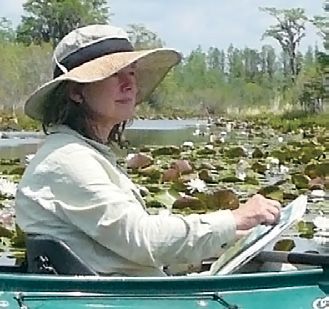Member Spotlight - Mary Ellen Taylor
– All illustrations © Mary Ellen Taylor, unless otherwise noted.
When considering my circuitous career path toward botanical and nature art over the past 40 years, I clearly see that—apart from quantum leaps, serendipities, and sheer determination along the way, the seed was well and truly planted during my time living in the Galápagos Islands.

The endemic mangrove finch (Camarhynchus heliobates) and red mangrove (Rhizophora mangle) on the Galapagos Islands.
Witnessing first-hand the extraordinary forms, colors, and sizes that the flora and fauna evolved into—ensuring survival on these inhospitable islands 600 miles off the coast of Ecuador—engraved on my soul a powerful respect and awe for them. My view of the world we live in and our humble place as human beings was changed forever. Growing up, I was always “arty” and influenced by my father and grandmother, spending creative summers painting or building projects and tasting raw nature in rural Vermont. I went on to pursue Fine Art and a stint of Graphic Art before making my way to London for my semester abroad. I felt I had come home in England’s green and pleasant land. After nearly three years, my visa expired and I never finished at the university... but I knew I would return...somehow.
Reluctantly back in the USA but armed with determination to leave as soon as possible, I stumbled upon a new concept in travel—adventure tourism. I managed to begin working for a tiny, offbeat but fantastic company in this emerging field not three months later in NYC. My world opened up to the colorful Panamanian San Blas Islands, sailing through the Hebrides’ wild seas during summer solstice, cruising up the Nile, tranquil spring flowers, the magic of trekking the Inca Trail, and...the “Islands lost in time,” the Galápagos. I was hooked.
Quantum Leap #1 GALÁPAGOS ISLANDS (1982–1987)
I fell in love with this bizarre little archipelago and moved lock, stock, and barrel to Santa Cruz Island, where I was trained and licensed as a Naturalist Guide by the Galápagos National Park and Charles Darwin Research Station. I began to draw the plants and birds I lived with on a daily basis and guided visitors throughout the archipelago. It was a privilege to call this unique outdoor classroom my home for five years. I lived in a tiny lava-stone house in the mangroves on the edge of Academy Bay and it was here I knew that someday I would study how to properly pay homage to the beauty of plants through botanical painting. I had read of a diploma course in the Chelsea Physic Garden in London, which I never lost sight of and held in a special place somewhere deep in my soul.
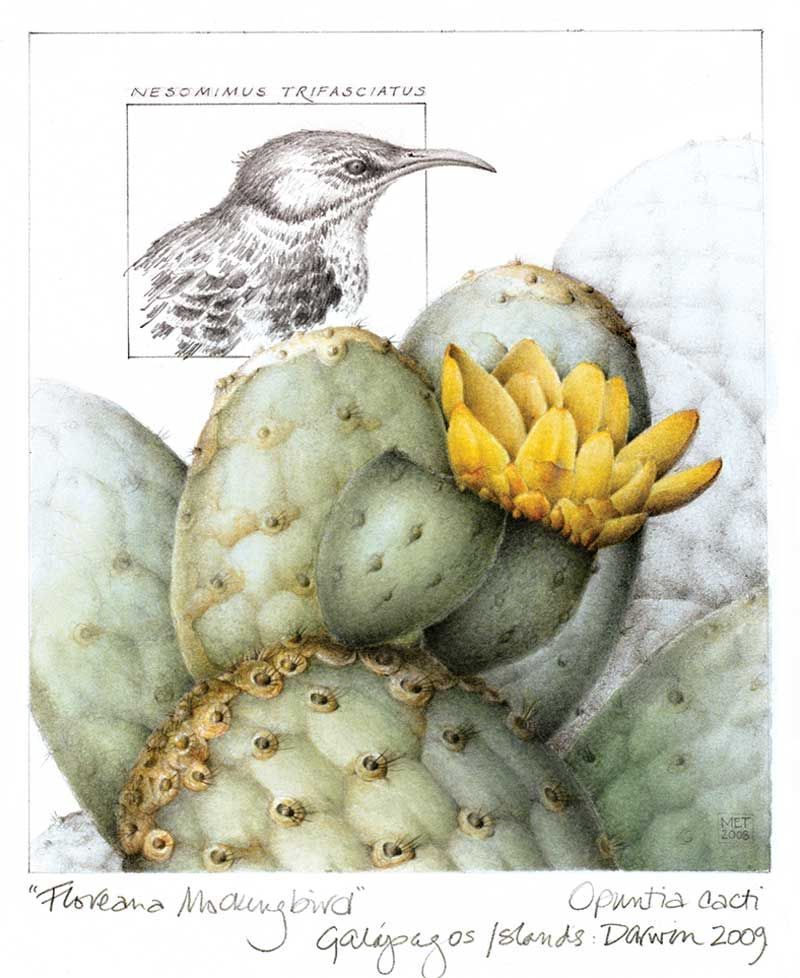
The endemic Floreana mockingbird (Mimus trifasciatus) and cacti (Opuntia galapageia) in the Galápagos Islands.
The difficulties of living in the islands were many. Having experienced the worst El Niño in 40 years, a failing marriage, and having a 2-year-old daughter to consider, we moved to the capital city, Quito. Straddling the equator at 9,350 ft in the Andes, with a semi-tropical climate and within easy reach of tropical jungle, cloud forest, Altiplano, and the lush coast, not to mention 1,600 bird species... I was spoiled for choice and fascinated by the diversity. However, after two decades of enduring earthquakes, volcanic and political eruptions, a few creative business ventures, extraordinary friendships, and a handful of serendipities—the opportunity to follow my dream of studying botanical art at the Chelsea Physic Garden, London, fell like manna from heaven.
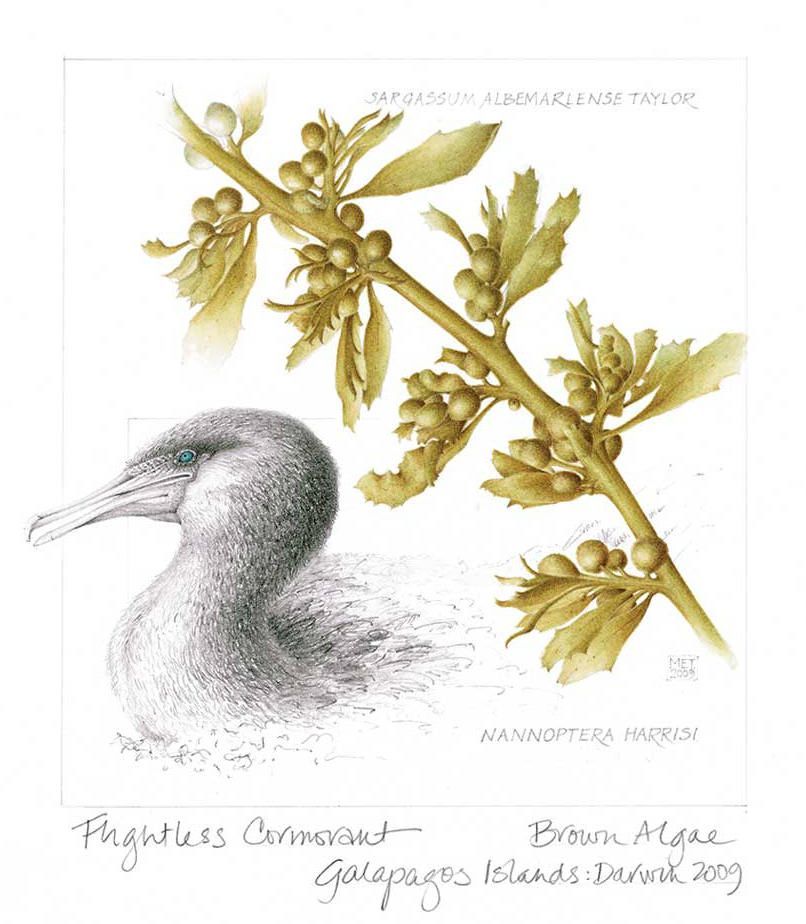
The Galápagos flightless cormorant (Phalacrocorax harrisi, formerly known as Nannopterum harrisi) and brown algae.
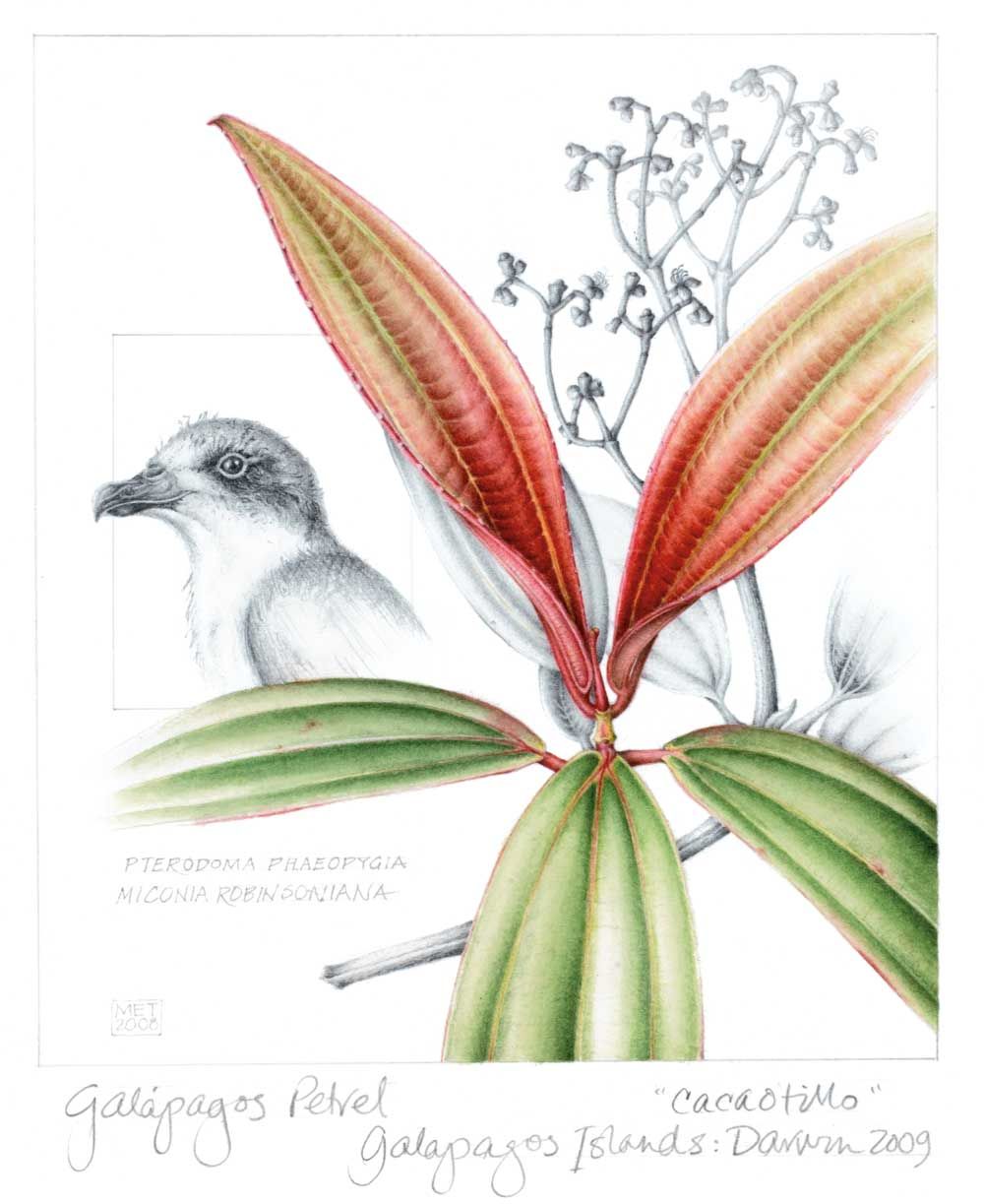
Galápagos petrel (Pterodroma phaeopygia) and cacaotillo shrub (Miconia robinsoniana).
Quantum Leap #2 LONDON (2003)
With my dream leading the way, I packed 21 years of my life into a container and moved across continents and hemispheres. It was quite a contrast from the Avenue of Volcanoes out my kitchen window in Quito, to seeing the whites of the eyes of Eurostar passengers whiz by in London!
With great anticipation, I embarked on the intensive English Gardening School diploma course in botanical painting, nestled within the magic walls of the oldest botanic garden in London: The Chelsea Physic Garden. It was like stepping into Narnia. I spent two years studying and working within the garden, when I was asked to step in for the Diploma Course Manager at the English Gardening School during their paternity leave. The six-week “job” lasted 12 years! Eighteen years later I am now Chair of the Chelsea Physic Garden Florilegium Society.
Projects
DARWIN INITIATIVE (2009)
In celebration of Charles Darwin’s 200th Anniversary and instigated whilst having tea with Sarah Darwin (British botanist and great, great-granddaughter of Charles Darwin), I developed an idea for a series of paintings to help raise awareness and funds for the Galápagos Conservation Trust’s (GTC’s) new project to save the endangered birds of the islands. Few visitors to the islands were aware that nearly a third of the endemic sea and land birds in the archipelago are still listed as severely endangered due to reduced populations and fluctuating reproductive success.
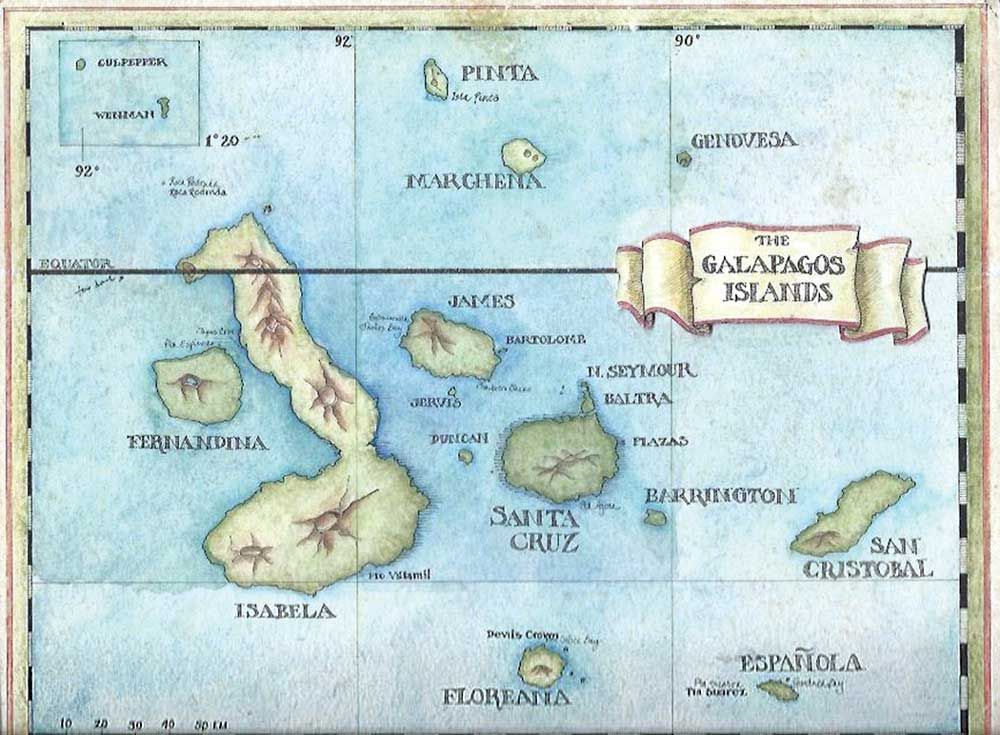
Map of the Galápagos Islands.
Sponsored by a London-based tour operator, I returned to the islands in February 2008 to collect data and begin painting.Onboard the yacht Beagle, I visited the more important islands for habitat illustration references of the birds’ nesting and feeding areas. I was given access to the preserved bird and plant specimens housed in the Charles Darwin Research Centre, and had the privilege of consulting with their resident biologists and botanists.
The original paintings were sold at a London exhibition as a fundraising effort, with a percentage of the sales dedicated to GCT’s project. The sale of notelets and giclées continues to raise funds for the critical Mangrove Finch repatriation program off Floreana Island. Subsequently, as a Fellow of the Linnean Society in London, I was invited to exhibit the paintings at the annual Converzacione meeting. A set of the prints has been donated to the Society’s archives as a document to the natural history of endangered endemic birds in the Galápagos Islands today.
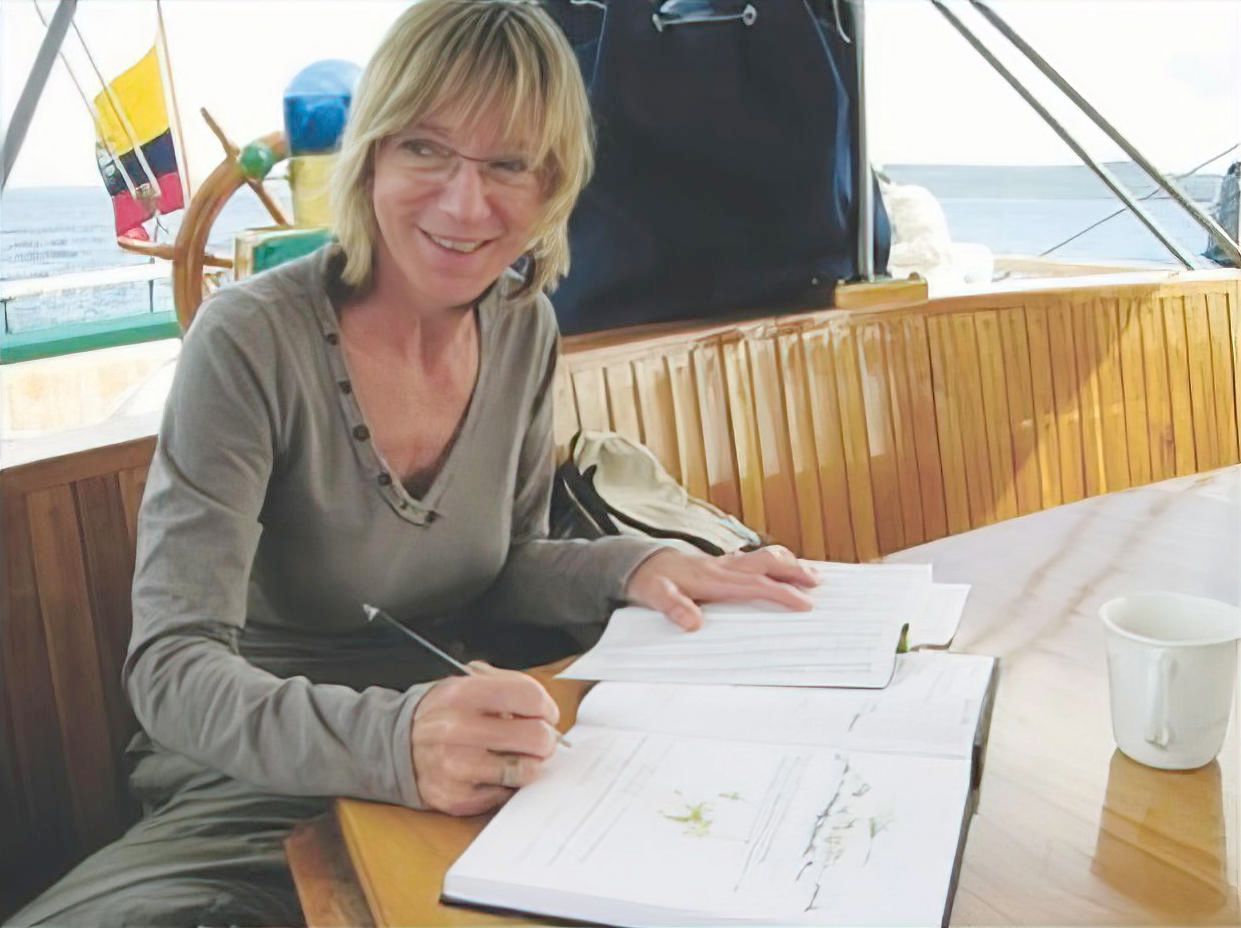
Mary Ellen Taylor onboard the yacht Beagle.
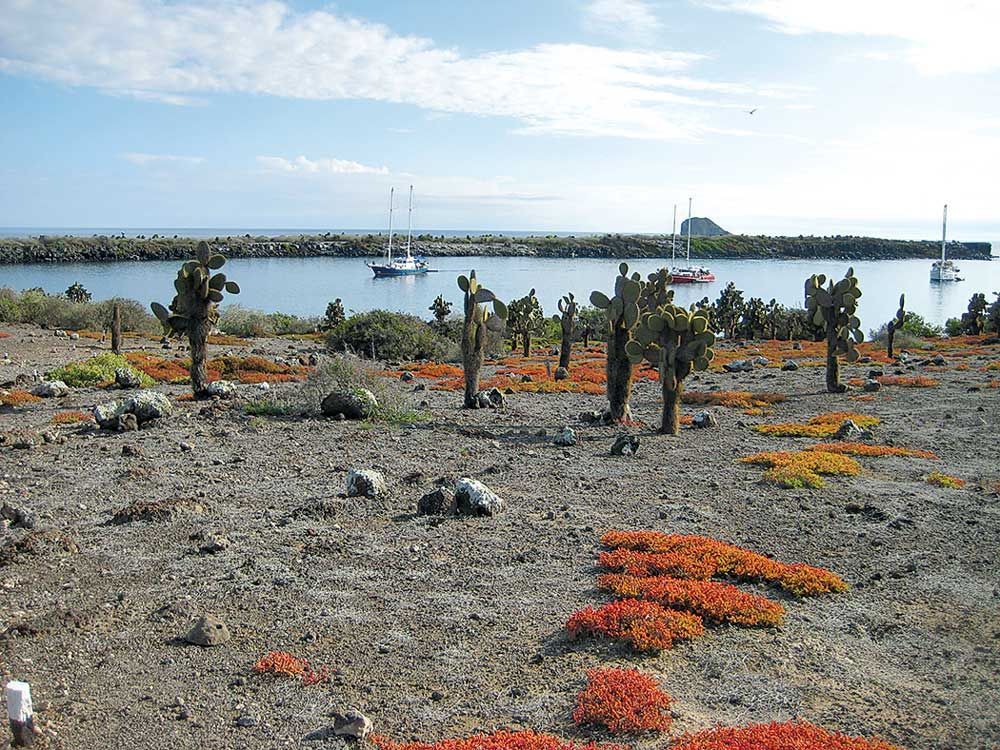
South Plaza Island, Galápagos.
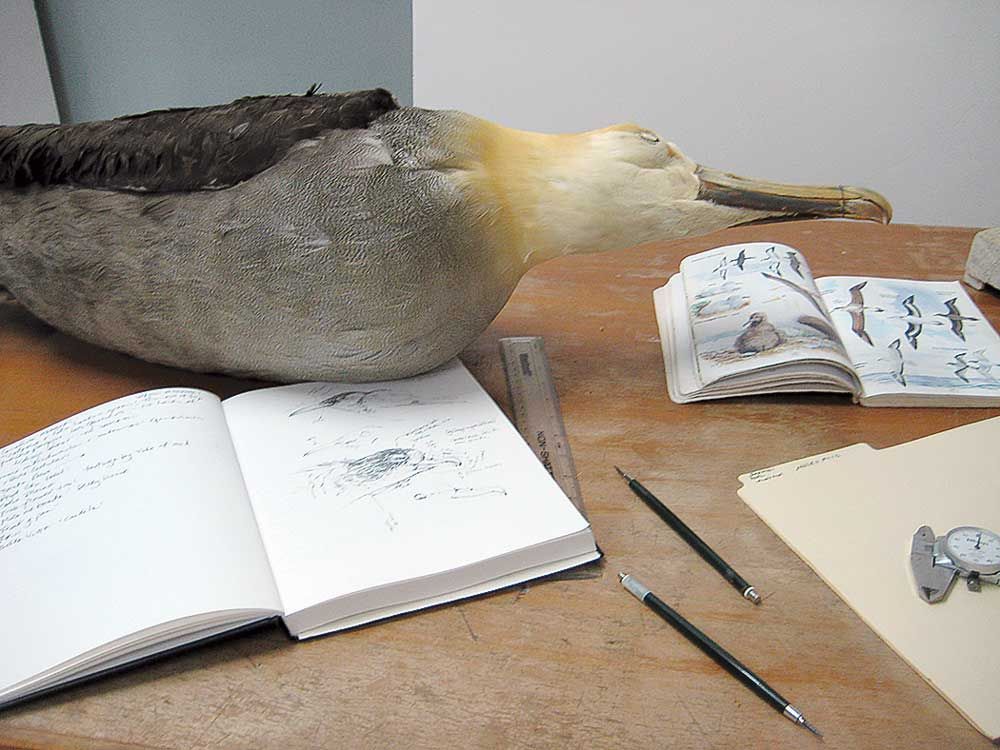
Albatross specimen at Charles Darwin Research Station.
BUTTERFLIES IN THE CHELSEA PHYSIC GARDEN (2012)
To celebrate the historical links with the grandfather of British butterflies, James Petiver (1664–1718), and his work with butterflies at the Chelsea Physic Garden, I was commissioned to paint the most common English butterflies found in the Physic Garden. Working closely with the Horticultural Records Manager and gardener, I was given information on the species recorded for the past five years. Fascinated by the relationships between flora and fauna, I decided to record the butterfly’s nectar sources as well. My research was furthered through the extensive resources available in the libraries and archives at the nearby Natural History Museum.
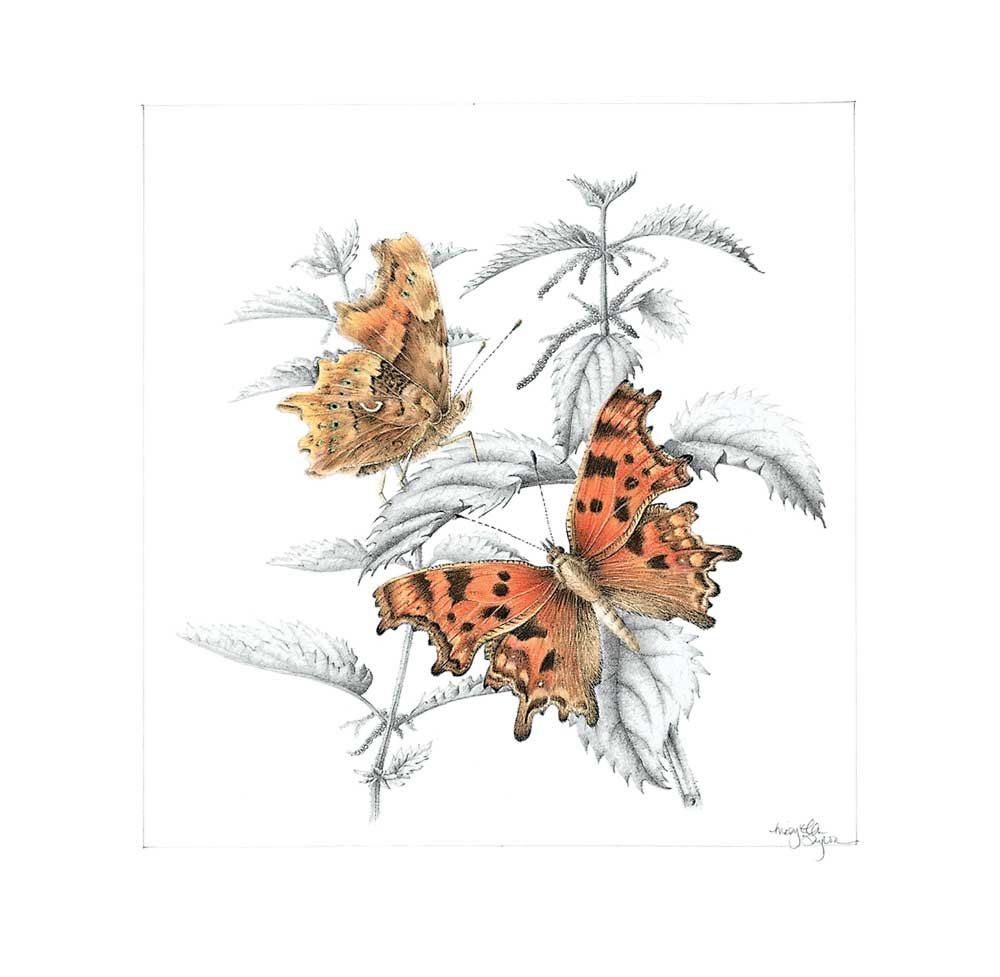
Comma butterfly (Polygonia sp.) with nettle (Urtica dioica).
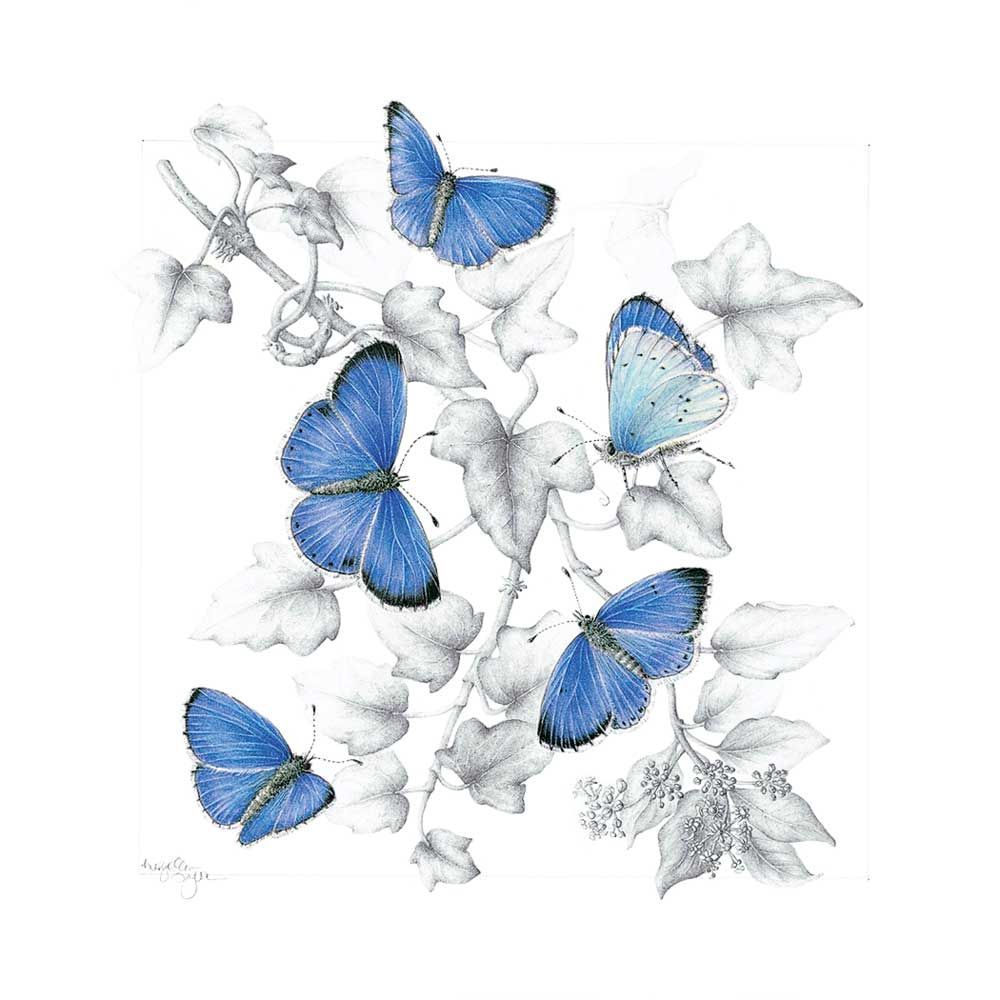
Holly blue butterflies (Celastrina argiolus) and English ivy (Hedera helix).
TRANSYLVANIA FLORILEGIUM (2016)
I was thrilled to be invited to take part in the final stages of a seven-year project created under the umbrella of the Prince of Wales’s Foundation to record in a permanent way the flora of Transylvania, Romania. An abundance of wildflowers found in this central area of Romania have remained untainted by modern agriculture, due to the ancient methods of farming still practiced today.
Working with the Prince of Wales’s taxonomist, Dr. John Akeroyd, and under the scrutinizing eye of the project manager, renowned botanical artist Helen Allen, we spent two glorious weeks in the foothills of the Carpathian Mountains. We searched the hills and wooded areas for the last remaining species that Dr. Akeroyd wished to record, did our color studies and field sketches, preserved plant parts in the local ‘firewater,’ and returned to the UK to produce the final works.
The fine art edition of the two-volume series Transylvania Florilegium is hand-bound in leather and marbled paper, and finished with gold leaf. The Preface is written by HRH The Prince of Wales, who is a passionate supporter of the conservation of this precious environment.
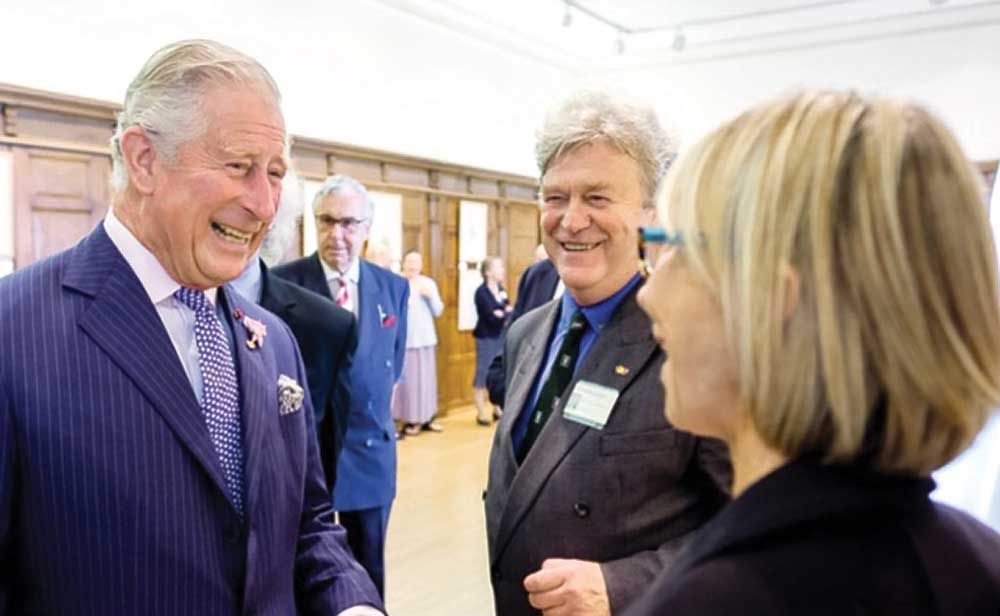
HRH The Prince of Whales with Mary Ellen Taylor.
OTHER WORK
Apart from the projects above, I have been fortunate enough to paint an Iris ‘Duke of Bedford,’ which was only recently discovered and named after the Duke’s grandfather. The artwork was commissioned by Her Grace, The Duchess of Bedford, for Woburn Abbey.
I continue to teach in the UK and Europe, and actively contribute to the Chelsea Physic Garden Florilegium archives, documenting the purposeful plants found in the Garden. I have also contributed illustrations to the multilingual field guide Galápagos: A Guide to the Animals and Plants, published in 2011 by Nigel Sitwell. My butterflies have been featured in Resurgence & Ecologist magazine, and my work is held in private collections.
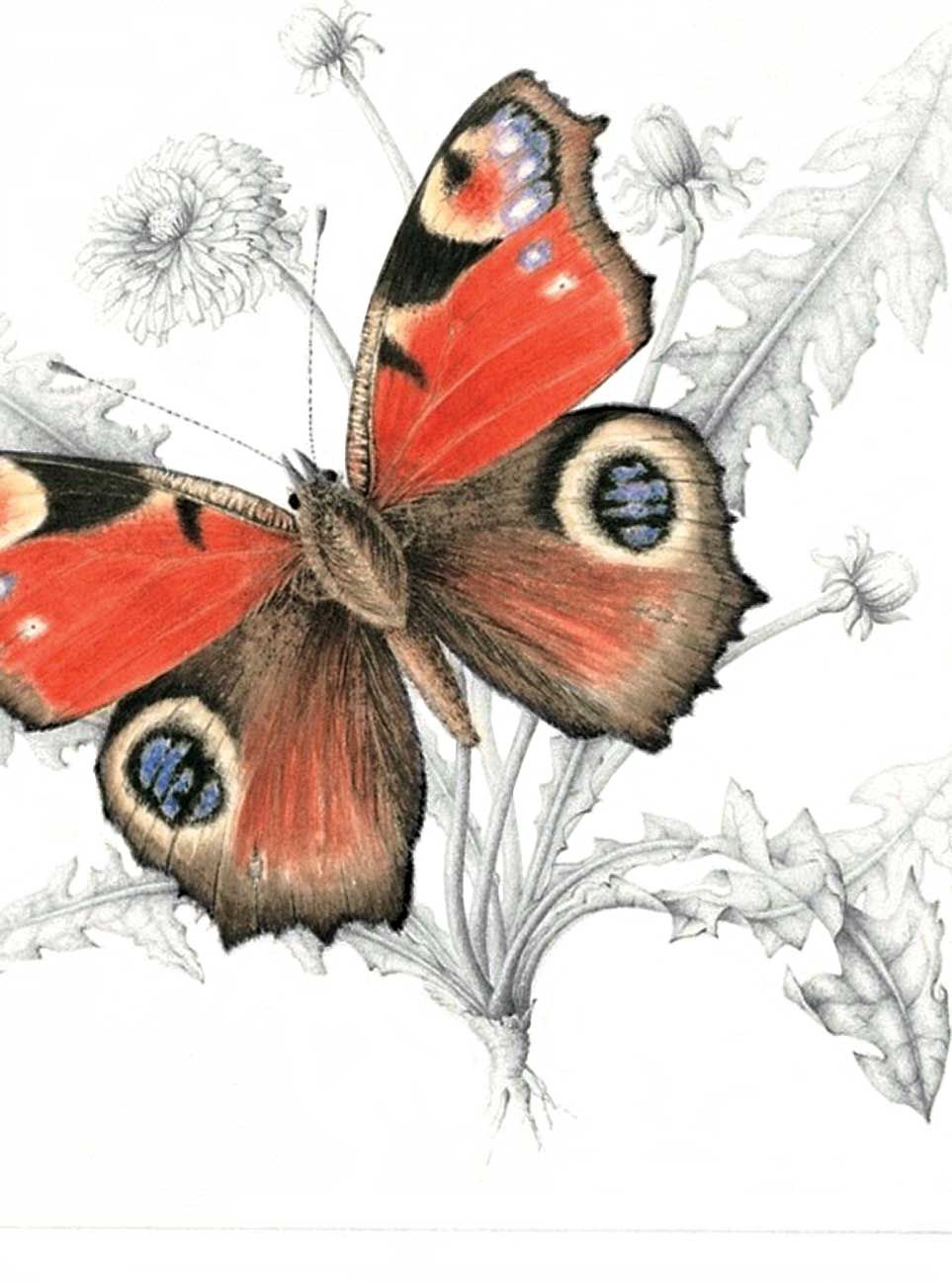
Peacock butterfly (Taraxacum officinale) with dandelion.
Thinking back on my journey, I believe that never losing sight of my vision—my passion to get to know the ‘spirit’ of the flora and fauna I work with through painting and the experiences that influenced and enriched me—have brought me full circle to where I am so very happily ensconced now.

